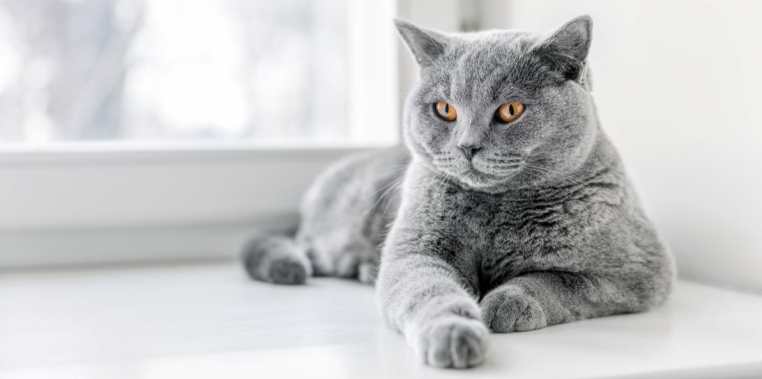1. Introduction
The behavior of a shorthair cat is often a topic of curiosity for cat owners and enthusiasts. Shorthair cats, with their sleek coat and playful nature, are popular pets in many households. Understanding their behavior can help pet owners provide the best care and create a harmonious environment for their feline companions. In this blog, we will explore the behavior of shorthair cats, including their temperament, socialization needs, and common behavioral traits. Whether you are considering adopting a shorthair cat or already have one at home, this blog will provide valuable insights into the behavior of these delightful feline companions.
2. Physical characteristics of a shorthair cat
Shorthair cats possess a distinct set of physical characteristics that contribute to their unique behavior. Their sleek, smooth coat is not only aesthetically pleasing but also serves a practical purpose. The short, dense fur requires less grooming and is less likely to attract dirt and debris. This low-maintenance aspect of their coat often translates into a more independent demeanor. Shorthair cats tend to be self-reliant and are known for their ability to adapt to various environments. Their agile bodies and muscular build make them excellent climbers and jumpers, allowing them to explore their surroundings with ease and grace. Despite their active nature, shorthair cats also enjoy moments of relaxation and can often be found lounging in sunny spots or curled up in comfortable corners. The physical characteristics of shorthair cats contribute to their playful, adventurous, yet laid-back behavior, making them an ideal choice for many cat lovers. Stay tuned for the next section, where we will delve into the temperament of shorthair cats.
3. Typical personality traits of a shorthair cat
Shorthair cats are known for their specific personality traits that make them a beloved choice among cat enthusiasts. These feline companions are often described as curious and energetic. Their inquisitive nature drives them to explore every nook and cranny of their environment, making them excellent hunters and natural adventurers. Shorthair cats also tend to be intelligent and quick learners, which makes them easily trainable. Their lively spirit and playful demeanor often bring endless hours of entertainment and joy to their owners.
Alongside their active side, shorthair cats also possess a gentle and affectionate nature. They enjoy cuddling and being in close proximity to their human companions. However, they may not be as dependent or clingy as some other cat breeds, due to their independent streak. This makes them a suitable choice for individuals who desire a balance between companionship and independence.
In the following section, we will explore the social behavior of shorthair cats, shedding light on their interactions with other pets and humans. Stay tuned to discover more about these wonderful feline friends!
4. Common behavior patterns in shorthair cats
Shorthair cats exhibit several common behavior patterns that distinguish them from other cat breeds. One common behavior is their love for playtime. Shorthair cats are known to be highly active, and they enjoy engaging in various forms of play, whether it’s chasing toys, climbing, or even participating in interactive games with their owners.
Another notable behavior trait is their love for heights. Shorthair cats have a natural inclination to climb and explore elevated spaces. They will often be seen perching on top of bookshelves, cabinets, and other high surfaces. Providing a tall scratching post or a cat tree can help fulfill their need to climb and satisfy their curious nature.
In addition, shorthair cats are typically very vocal. They have a wide range of vocalizations, from soft purrs of contentment to loud meows when demanding attention or expressing their needs. It’s important to pay attention to their vocal cues to understand their wants and provide them with the necessary care.
Overall, these behavior patterns contribute to the charm and uniqueness of shorthair cats. In the next section, we will delve deeper into their social behavior, including their interactions with other pets and humans. Stay tuned to learn more about the fascinating social dynamics of shorthair cats!
5. How to properly care for a shorthair cat’s behavior
To properly care for a Shorthair cat’s behavior, there are a few important considerations to keep in mind. First and foremost, providing ample opportunities for exercise and playtime is crucial. As previously mentioned, Shorthair cats are highly active and need regular physical and mental stimulation to prevent boredom and destructive behavior.
Creating a stimulating environment with interactive toys, scratching posts, and climbing structures will help satisfy their natural instincts. Regular play sessions and interactive games with their owners can also strengthen the bond between cat and human.
In addition to physical exercise, proper socialization is vital for a Shorthair cat’s behavior. Introduce them to new experiences, people, and other pets gradually and positively. This will help reduce anxiety and contribute to their overall well-being.
Lastly, understanding and respecting a Shorthair cat’s vocal cues is essential. Pay attention to their meows, purrs, and other vocalizations to meet their needs and ensure their comfort.
By providing the right environment, socialization, and attention to their vocal cues, you can ensure a happy and well-adjusted Shorthair cat. Stay tuned for the next section, where we will discuss common health considerations for this breed.
6. Training and socialization for shorthair cats
Training and socialization are important aspects of caring for a Shorthair cat. While Shorthair cats are generally independent, they can benefit from basic training to ensure good behavior and obedience.
Start by teaching your Shorthair cat basic commands such as “sit,” “stay,” and “come.” Positive reinforcement techniques, such as treats and praise, work well with these intelligent cats. Consistency and patience are key when training a Shorthair cat, as they may test boundaries from time to time.
Socialization is equally crucial for Shorthair cats. Expose them to different environments, people, and animals to help them develop confidence and adaptability. Gradual and positive introductions to new experiences will help reduce anxiety and prevent behavior problems.
By providing training and socialization, you can ensure that your Shorthair cat grows into a well-behaved and sociable companion. In the next section, we will explore the unique grooming needs of Shorthair cats. Stay tuned!
7. Conclusion: Understanding and appreciating shorthair cat behavior
In conclusion, understanding and appreciating the behavior of a Shorthair cat is essential for providing them with a happy and fulfilling life. By recognizing their independent nature and utilizing training techniques, you can ensure that they exhibit good behavior and obedience. Socialization plays a vital role in their development, allowing them to be confident and adaptable in various settings.
It’s important to remember that Shorthair cats may test boundaries, so consistency and patience are key when training them. Additionally, gradually exposing them to new experiences will help prevent behavior problems and reduce anxiety.
In the next section, we will discuss the unique grooming needs of Shorthair cats. Grooming is an essential part of their care, and understanding their specific requirements will contribute to their overall well-being. Stay tuned to learn more about keeping your Shorthair cat looking and feeling their best!

